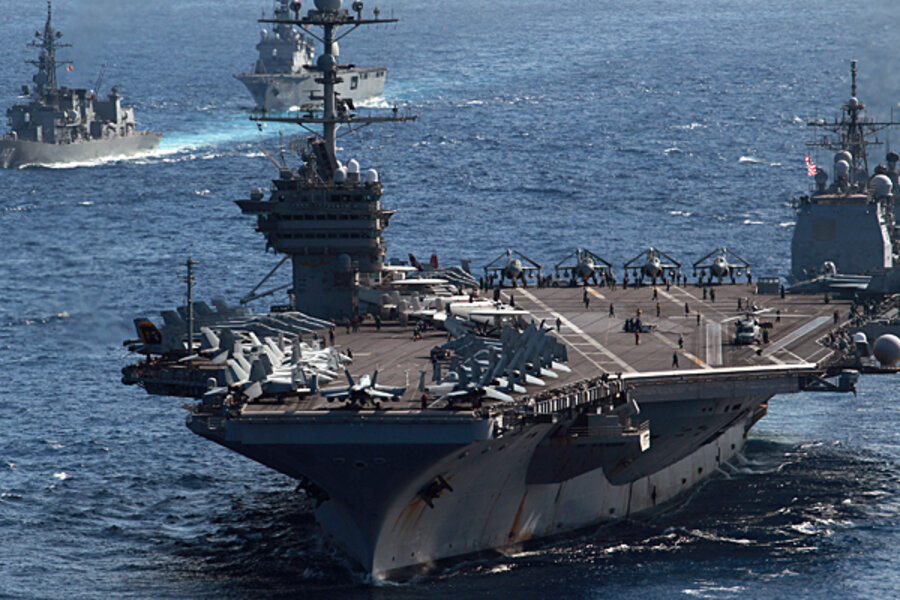US Navy poised to help Japan earthquake relief effort
Loading...
| Washington
Despite large numbers of US troops and assets in Japan, there have been no reports of serious injury or death to US military personnel in the aftermath of a 8.9-magnitude earthquake there Friday morning, nor has there yet been any “significant damage” to ships or facilities, according to Pentagon officials.
Japan has long been one of the US military’s key base regions. There are some 38,000 US troops stationed in Japan, along with 43,000 US family members and roughly 3,000 Department of Defense civilians.
While the US Navy continues to assess the state of its fleet, it is also getting ships underway and clear of the rough coast in Hawaii and Seal Beach, San Diego to protect them from turbulent seas and possible tsunami in the wake of the earthquake that has devastated Japan, defense officials said Friday. “We’re moving things out from affected areas and getting them inland,” says Col. Dave Lapan, Pentagon spokesman.
This is expected to include submarines as well, which the Pentagon is often loath to discuss because they are equipped with strategic weapons and intelligence capabilities. In Guam, the mooring lines of two US navy submarines broke from the pier after the earthquake and had to be tugged back to port.
At the same time, ships from the US Navy’s 7th Fleet are mobilizing to provide humanitarian aid and medical relief that has been requested by Japan’s new foreign minister. These vessels are being “positioned and prepared to provide any assistance necessary,” Lapan told reporters Friday. “We are in the process of determining what the requirements are, and how we might fill them.”
The USS Blue Ridge, the 7th Fleet’s command ship, is currently on-loading humanitarian supplies in Singapore, while others, including the USS Essex in Malaysia, are ready to depart to provide aid in the hardest-hit earthquake regions, Lapan says.
The US military often takes part in exercises designed to practice providing humanitarian aid, including one in which US, Japanese, and Malaysian forces took part earlier this week. “This is when this comes in very handy,” Lapan added, referring to the humanitarian relief drills.
This US military assistance can take many forms, from making floating medical centers on US Navy ships available to provide emergency care, to US troops who may simply be “filling sandbags,” Lapan says. The ships are also equipped with food, blankets, and airlift capacity to help move people and supplies. “If they need food, we can bring food,” he adds. “If they need shelter, we can bring that.”





